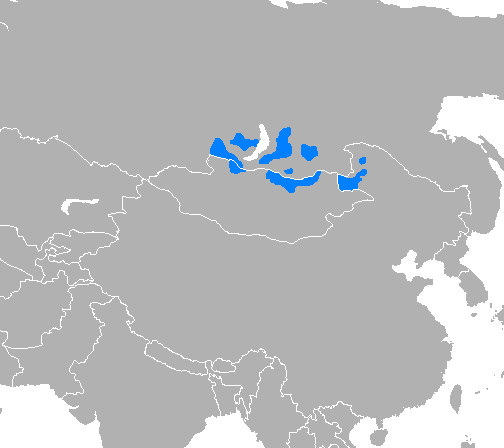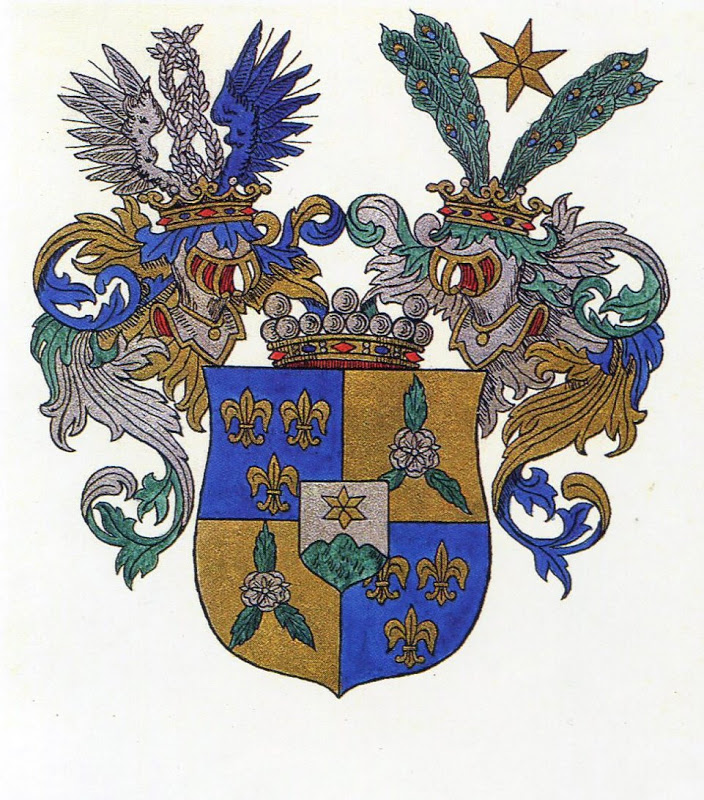|
Altanbulag, Selenge
Altanbulag ( mn, Алтанбулаг, "golden spring") is a sum (district) of Selenge Province in northern Mongolia. It is located about 25 km from the provincial capital of Sükhbaatar, on the border with Russia opposite the town of Kyakhta. Altanbulag is the location of the Altanbulag Free Trade Zone (, ''Altanbulag qudaldaany çölööt büs''). History Altanbulag began as a trading outpost across the Kyakhta River from the Russian town of Kyakhta during Qing rule of Mongolia in 1730. The name of that city was called Maimaicheng (Mongolian: Худалдаачин, English: City of Buying and Selling) at the first and later renamed to Kyakhta (Mongolian: Khiagt). Also people used other names such as "Mongolian Khyahta" and "Southern Kyakhata". Following the Treaty of Kyakhta in 1727 each side built a trading post on its side of the border. Construction began in 1730. It was perhaps 500 to 700 feet south of Kyakhta, upstream on the small Kyakhta River. The tow ... [...More Info...] [...Related Items...] OR: [Wikipedia] [Google] [Baidu] |
Districts Of Mongolia
A district ( mn, сум, , , ; "arrow"), is a second level administrative subdivision of Mongolia. The 21 Provinces of Mongolia are divided into 331 districts.Montsame News Agency. ''Mongolia''. 2006, Foreign Service office of Montsame News Agency, , p. 46 On average, each district administers a territory of with about 5,000 inhabitants, primarily nomadic herders. Its total revenue is 120 million Mongolian tögrög, Tögrög, 90% of which comes from national subsidies. Each district is again subdivided into ''bags'' (brigades; sometimes spelled ''baghs''). Most bags are of an entirely virtual nature. Their purpose is to sort the families of nomads in the district into groups, without a permanent human settlement. Officially, and occasionally on maps, many district seats (sum centers) bear a name different from that of the district. However, in practice the district seat (sum center) is most often referred to under the name of the district, to the point of the official name ... [...More Info...] [...Related Items...] OR: [Wikipedia] [Google] [Baidu] |
Populated Places In Mongolia
Population typically refers to the number of people in a single area, whether it be a city or town, region, country, continent, or the world. Governments typically quantify the size of the resident population within their jurisdiction using a census, a process of collecting, analysing, compiling, and publishing data regarding a population. Perspectives of various disciplines Social sciences In sociology and population geography, population refers to a group of human beings with some predefined criterion in common, such as location, race, ethnicity, nationality, or religion. Demography is a social science which entails the statistical study of populations. Ecology In ecology, a population is a group of organisms of the same species who inhabit the same particular geographical area and are capable of interbreeding. The area of a sexual population is the area where inter-breeding is possible between any pair within the area and more probable than cross-breeding with ... [...More Info...] [...Related Items...] OR: [Wikipedia] [Google] [Baidu] |
Kyakhta Trade
The Kyakhta Trade (russian: История кяхтинской торговли, ''Istorija kjahtinskoj torgovli'', zh, 恰克图商路) refers to the trade between Russia and China through the town of Kyakhta on the Mongolian border south of Lake Baikal from 1727. The trade was mostly Siberian furs for Chinese cotton, silk, tobacco and tea. The earlier Nerchensk trade 1689–1722 Russia and China came into contact when in 1582–1639 Russians made themselves masters of the Siberian forests. The border in "Manchuria" was delineated by the Treaty of Nerchinsk in 1689. This treaty said nothing about Mongolia since this area was not yet under Chinese/Manchu control. The fifth article of the treaty allowed trade with proper documents but was otherwise vague. Russian merchants began organizing caravans from Nerchinsk to Peking, the round trip usually taking 10–12 months. In 1692–93 Eberhard Isbrand Ides went on a commercial-diplomatic mission to Peking. He left Peking in Febr ... [...More Info...] [...Related Items...] OR: [Wikipedia] [Google] [Baidu] |
Maimaicheng (other)
{{geodis ...
Maimaicheng, was Chinese toponym meaning (literally) "trade town" or "trading post". Maimaichengs were found in border posts and towns of Outer Mongolia from the 18th to early 20th centuries. Maimaicheng may refer to: * Altanbulag, Selenge * Amgalan town, (until the early 20th century), today in Bayanzürkh District of Ulan Bator * part of medieval Khovd (city) Khovd ( mn, Ховд, Howd, ), formerly known as Kobdo or Khobdo, is the capital of the Khovd Province of Mongolia. It is officially known as Jargalant sum. Geography and climate It is situated at the foot of the Mongol Altay Mountains, on ... [...More Info...] [...Related Items...] OR: [Wikipedia] [Google] [Baidu] |
Buryat Language
Buryat, or Buriat (; Buryat Cyrillic: , , ), known in foreign sources as the Bargu-Buryat dialect of Mongolian, and in pre-1956 Soviet sources as Buryat-Mongolian,In China, the Buryat language is classified as the Bargu-Buryat dialect of the Mongolian language. is a variety of the Mongolic languages spoken by the Buryats and Bargas that is classified either as a language or major dialect group of Mongolian. Geographic distribution The majority of Buryat speakers live in Russia along the northern border of Mongolia where it is an official language in the Buryat Republic and was an official language in the former Ust-Orda Buryatia and Aga Buryatia autonomous okrugs. In the Russian census of 2002, 353,113 people out of an ethnic population of 445,175 reported speaking Buryat (72.3%). Some other 15,694 can also speak Buryat, mostly ethnic Russians. Buryats in Russia have a separate literary standard, written in a Cyrillic alphabet. It is based on the Russian alphabet with thr ... [...More Info...] [...Related Items...] OR: [Wikipedia] [Google] [Baidu] |
Mongolian People's Republic
The Mongolian People's Republic ( mn, Бүгд Найрамдах Монгол Ард Улс, БНМАУ; , ''BNMAU''; ) was a socialist state which existed from 1924 to 1992, located in the historical region of Outer Mongolia in East Asia. It was ruled by the Mongolian People's Revolutionary Party and maintained close links with the Soviet Union throughout its history. Geographically, it was bordered by China to its south and the Soviet Union (via the Russian SFSR) to its north. Until 1944, it also bordered the Tuvan People's Republic, a Soviet satellite state recognized only by Mongolia and the Soviet Union. History Formation From 1758 to 1911, the Mongols were ruled by the Manchu Qing dynasty. In the first decade of the 20th century, the Qing government began implementing the so-called New Policies, aimed at a further integration of Outer Mongolia. Upset by the prospect of the colonization akin to the developments in Inner Mongolia during the 19th century, the Mongoli ... [...More Info...] [...Related Items...] OR: [Wikipedia] [Google] [Baidu] |
Roman Ungern Von Sternberg
Nikolai Robert Maximilian Freiherr von Ungern-Sternberg (russian: link=no, Роман Фёдорович фон Унгерн-Штернберг, translit=Roman Fedorovich fon Ungern-Shternberg; 10 January 1886 – 15 September 1921), often referred to as Roman von Ungern-Sternberg or Baron Ungern, was an anticommunist general in the Russian Civil War and then an independent warlord who intervened in Mongolia against China. A part of the Russian Empire's Baltic German minority, Ungern was an ultraconservative monarchist who aspired to restore the Russian monarchy after the 1917 Russian Revolutions and to revive the Mongol Empire under the rule of the Bogd Khan. His attraction to Vajrayana Buddhism and his eccentric, often violent, treatment of enemies and his own men earned him the sobriquet "the Mad Baron" or "the Bloody Baron". In February 1921, at the head of the Asiatic Cavalry Division, Ungern expelled Chinese troops from Mongolia and restored the monarchic power of the ... [...More Info...] [...Related Items...] OR: [Wikipedia] [Google] [Baidu] |
Russian Soviet Federative Socialist Republic
The Russian Soviet Federative Socialist Republic, Russian SFSR or RSFSR ( rus, Российская Советская Федеративная Социалистическая Республика, Rossíyskaya Sovétskaya Federatívnaya Socialistíčeskaya Respúblika, rɐˈsʲijskəjə sɐˈvʲetskəjə fʲɪdʲɪrɐˈtʲivnəjə sətsɨəlʲɪˈsʲtʲitɕɪskəjə rʲɪˈspublʲɪkə, Ru-Российская Советская Федеративная Социалистическая Республика.ogg), previously known as the Russian Soviet Republic and the Russian Socialist Federative Soviet Republic as well as being unofficially known as Soviet Russia,Declaration of Rights of the laboring and exploited people, article I. the Russian Federation or simply Russia, was an independent federal socialist state from 1917 to 1922, and afterwards the largest and most populous of the Soviet socialist republics of the Soviet Union (USSR) from 1922 to 1991, until becoming a ... [...More Info...] [...Related Items...] OR: [Wikipedia] [Google] [Baidu] |
Resident (title)
A resident minister, or resident for short, is a government official required to take up permanent residence in another country. A representative of his government, he officially has diplomatic functions which are often seen as a form of indirect rule. A resident usually heads an administrative area called a residency. "Resident" may also refer to resident spy, the chief of an espionage operations base. Resident ministers This full style occurred commonly as a diplomatic rank for the head of a mission ranking just below envoy, usually reflecting the relatively low status of the states of origin and/or residency, or else difficult relations. On occasion, the resident minister's role could become extremely important, as when in 1806 the Bourbon king Ferdinand IV fled his Kingdom of Naples, and Lord William Bentinck, the British Resident, authored (1812) a new and relatively liberal constitution. Residents could also be posted to nations which had significant foreign in ... [...More Info...] [...Related Items...] OR: [Wikipedia] [Google] [Baidu] |
Ulan Bator
Ulaanbaatar (; mn, Улаанбаатар, , "Red Hero"), previously anglicized as Ulan Bator, is the capital and most populous city of Mongolia. It is the coldest capital city in the world, on average. The municipality is located in north central Mongolia at an elevation of about in a valley on the Tuul River. The city was originally founded in 1639 as a nomadic Buddhist monastic center, changing location 28 times, and was permanently settled at its current location in 1778. During its early years, as Örgöö (anglicized as Urga), it became Mongolia's preeminent religious center and seat of the Jebtsundamba Khutuktu, the spiritual head of the Gelug lineage of Tibetan Buddhism in Mongolia. Following the regulation of Qing-Russian trade by the Treaty of Kyakhta in 1727, a caravan route between Beijing and Kyakhta opened up, along which the city was eventually settled. With the collapse of the Qing Empire in 1911, the city was a focal point for independence efforts, lea ... [...More Info...] [...Related Items...] OR: [Wikipedia] [Google] [Baidu] |
Lifanyuan
The Lifan Yuan (; ; Mongolian: Гадаад Монголын төрийг засах явдлын яам, ''γadaγadu mongγul un törü-yi jasaqu yabudal-un yamun'') was an agency in the government of the Qing dynasty of China which administered the empire's Inner Asian territories such as Mongolia and oversaw the appointments of Ambans in Tibet. Until the 1860s, it was also responsible for the Qing's relations with the Russian Empire. Name The name Lifan Yuan has various translations in English, including the ''Board for National Minority Affairs'', ''Court of Territorial Affairs'', ''Board for the Administration of Outlying Regions'', ''Office for Relations with Principalities'', ''Office of Barbarian Control'', ''Office of Mongolian and Tibetan Affairs'' and ''Court of Colonial Affairs''. etc. The office was initially known as the Mongol Yamen (; , lit. the Mongol department) when it was first created in 1636. In 1639 the department was renamed and expanded to "Lifan Yuan" in ... [...More Info...] [...Related Items...] OR: [Wikipedia] [Google] [Baidu] |



_(14572099319).jpg)

.jpg)


